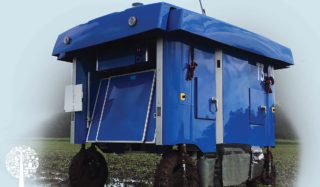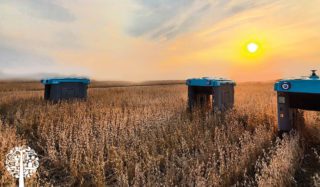The Way Of The Future? Project Mineral, Robot Farming And Growing Food
It’s hard to believe that the film Blade Runner was set in 2019! While today’s world isn’t quite the sprawling neon-lit metropolis filled with flying cars, cyborgs, and mutants like the one portrayed in the movie, small aspects of such a future are trying to creep in. For example, automated robots might soon be growing our food for us.
Alphabet, a parent company of Google, is behind Mineral, a groundbreaking and ambitious agricultural tool. As described by the inventors, the project hopes to ” embrace nature’s diversity to nourish generations to come.”
What Is Mineral?
Mineral is about reading the plant. Farmers may understand their soil and crops from experience, but this high-tech gadget aims to take things further by collecting all information that could be helpful to the grower, knowledge that, until this point, has been too complex and challenging to gather. Mineral organizes, presents, and uses the information to help farmers with the many decisions they need to make every growing season. Some of the details the robot will be able to gather include the environmental conditions, past crop data, soil composition, and more. The information is recorded and used as a blueprint to predict and plan future crop yields.
How it Will Work
Fully-automated, eco-friendly, and solar-powered robots will roam crop fields to collect massive amounts of plant data. These robots will use state-of-the-art digital cameras to gather high-quality plant trait information and images. The buggies identify and classify plants and weeds, while GPS software allows the mapping of individual plant locations. Plant buggies can also spot pests and diseases, record the number and growth of fruits and flowers, record plant height and leaf area, and more.
Where the Data Goes
This data then runs through software, which cross-references it with weather data, soil composition, and satellite imagery. A detailed picture is made of what is going on in the field, the existing growth patterns, and how the plants could perform better.
The Future of Gardening
Mineral’s vision and software could usher in a future where a gardener can read through an email job list of physical plant interactions. This way, no plant will be missed, and every single one will reach its full potential.
Breeders using the Mineral tool can understand and predict how different plants respond to their environments. Mapping and imaging plants mean more precise predictions of yield size. Troubleshooting and treating entire fields and individual plants could prove very desirable in reducing the cost and environmental impact of insecticides and pesticides.
Good or Bad?
Is all of this necessary? Some would argue that to keep up with the demand of feeding the world’s growing population, we need to fully understand what we are growing and how we grow it. The United Nations estimates we will need to produce more food in the next 50 years than we have grown in the last 10,000! Add to this the challenging climate change factor, and you can appreciate why the Mineral project was born.
Over 30,000 species of edible plants grow on earth, and less than 1% are farmed for food. Of that 1%, rice, wheat, and maize account for almost 50% of the world’s plant-based calories.
The Mineral project could be a game-changer in sourcing other viable food alternatives. Growing leaps and bounds in productivity would enable us to get the best out of the crops we already rely on in the less than perfect conditions we are facing.
Some may think Mineral is a step in the right direction and takes all of the guesswork out of agriculture. Others may feel we’re only inching closer to robots ruling the world and a lazier, more machine-dependent human race.
What do you think?






